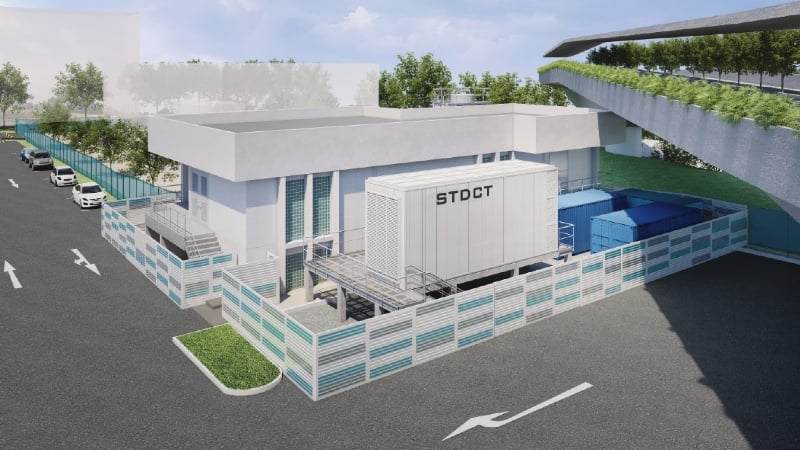In this blog series, “Innovating Out Loud,” I discuss Vertiv’s culture of innovation through the lens of five behaviors that help spark curiosity, bring new and exciting ideas into the fold, and strengthen a company’s innovation muscles. These behaviors are described in one of my favorite books on the topic of innovation, “Eat, Sleep, Innovate: How to Make Creativity an Everyday Habit Inside Your Organization.” In this post, we’ll discuss adeptness in ambiguity, or adapting and preparing for disruptions by analyzing current product offerings and figuring out how they can address needs in the industry.
The world is always changing, and the more a business specializes, the more dramatic these disruptions can become. However, surrounding yourself with a team of diverse thinkers and keeping an open mind toward the future can help provide you with the flexibility to adapt and embrace big changes when they arrive. In my world, we call this behavior “adeptness in ambiguity.” To put it more poetically, this idea of being flexible and proactive in the face of change can be summed up by the great martial artist Bruce Lee: “Be water, my friend.”
Tech Readiness and Learning From “Uninnovating”
Over the past several years, we’ve worked to formalize and improve our internal new product development and introduction (NPDI) process to prevent some of our emerging ideas from slipping through the cracks and to increase our agility in developing products to address industry trends and disruptions. This is done, in part, by scoring ideas and technology components by their technology readiness, commercial readiness, and strategic value. This scoring system allows us to evaluate ideas and technologies more effectively, as well as know where we should be focusing our attention in developing new products and solutions.
Another methodology our team uses to help make us more adaptive to change is what’s called TRIZ. This problem-solving system involves exercises in which we identify about a dozen counterproductive ways to run a business and then brainstorm how to reverse the fallout that would stem from those actions. For example, we may ask the team to hypothetically harm a business by firing key managers and top salespeople or creating strategies for markets in which the business has no experience. By brainstorming ways to reverse course and mitigate the harm of these decisions, we can improve how we react and innovate in times of unexpected disruptions.
Innovating for Tomorrow’s Data Centers
One of the ways we try to predict what technology will be in demand further down the road is to start by looking 10 years into the future and working our way back to the present day. For example, we’re seeing a major proliferation of high-density cooling applications from organizations looking to advance their digital transformations and support societal changes, such as increased remote work and e-commerce. This doesn’t necessarily spell an end to air cooling in the coming months or even in the next couple of years. However, as digital demand continues to increase, so too will the processing power of the chips in data center racks, and it’s fair to assume that perhaps 10 years down the road, air cooling may no longer be tenable. By assuming that air cooling will no longer be acceptable for high-density computing applications 10 years from now, we can begin the process of analyzing what technology will likely serve as its replacement and what solutions we can develop to serve customers during this transition.
The Vertiv User Experience (VUE) is another way we as a company try to put ourselves in the shoes of our customers to better meet their needs. VUE is a cross-company initiative designed to help generate innovative ideas and solve customer problems on a holistic level by incorporating all the departments that interact with customers. We used this process when we developed our Vertiv™ Avocent® ADX Ecosystem and Vertiv™ Liebert® APS uninterruptible power supply (UPS). From the data collection phase, the team identified key problem areas, and through ideation and usability testing, were able to develop solutions that helped solve real customer issues in the field and provided enhanced user experiences.
To make our process feel less like trying to find a light switch in the dark, it’s also essential to engage with other industry leaders and stakeholders and work together to help build out the next generation of data center infrastructure. That’s why Vertiv is proud to partner with future-focused organizations like the Open Compute Project (OCP). Vertiv collaborated with other OCP-affiliated experts in thermal management, fluid materials science and engineering, server integration, and power connectivity to help solve the rack's thermal challenges related to increased computing densities. Together, we identified guidelines and best practices in immersion cooling for high-density environments. We also developed rack DC busbars and a 12-volt DC power shelf that are compatible with OCP racks.
Another recent example of Vertiv looking toward the future regarding thermal management, efficiency, and sustainability is our partnership with the National University of Singapore (NUS) and Nanyang Technological University (NTU) Singapore to help develop a state-of-the-art data center testbed facility. Cooling high-density compute applications, especially in hot and humid tropical climates like Singapore, can be challenging. Vertiv provided racks, rack power distribution (rPDU), and high-density cooling solutions to demonstrate how advanced thermal management technologies can support more efficient data centers in these locations. In the facility, innovative thermal management technologies will be tested to identify potential operational risks and design de-risking measures suited for the unique requirements of tropical climates.
In the final post of this series, we will discuss empowerment — how to ensure ideas are heard and that those contributing ideas are properly recognized. If you have any thoughts or comments on the topic of innovation, please get in touch. I’d love to hear your ideas.











